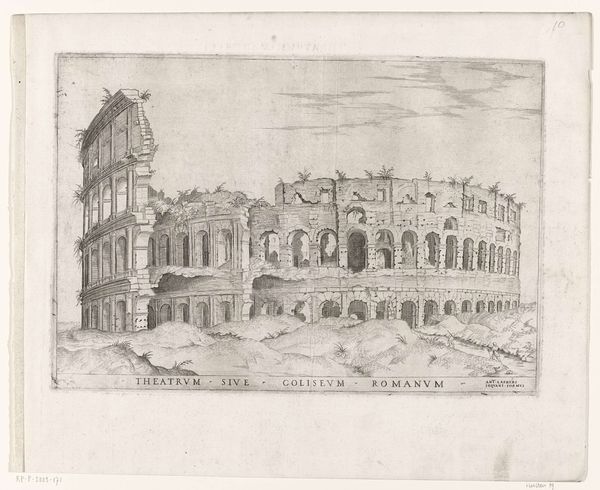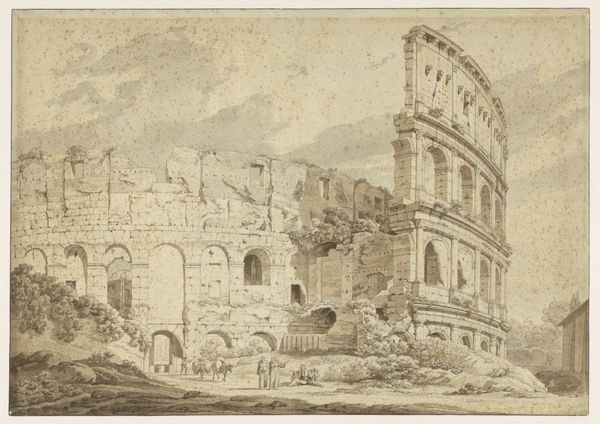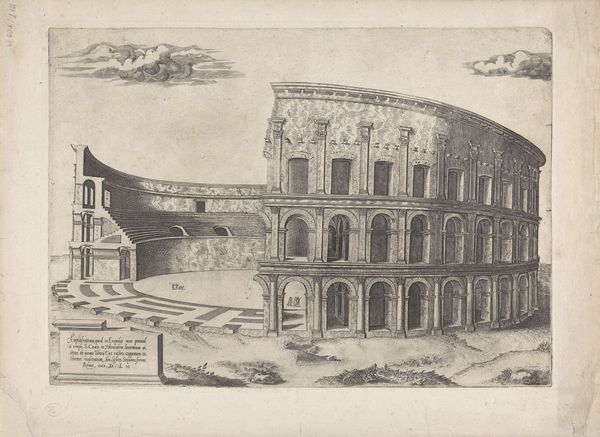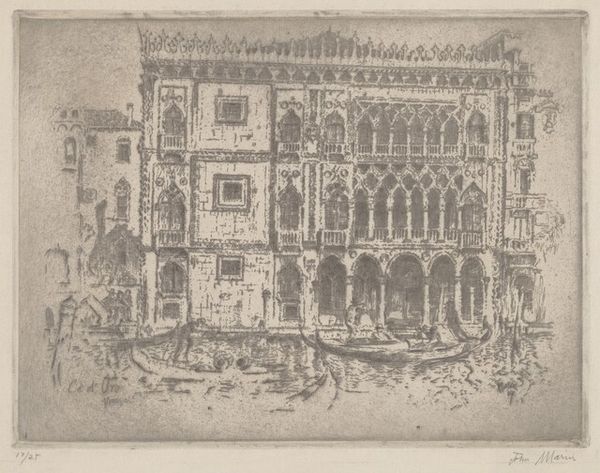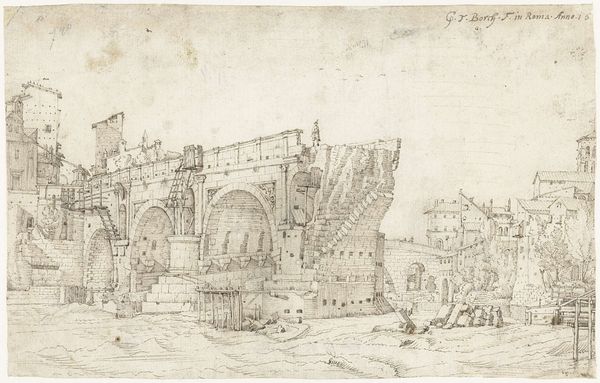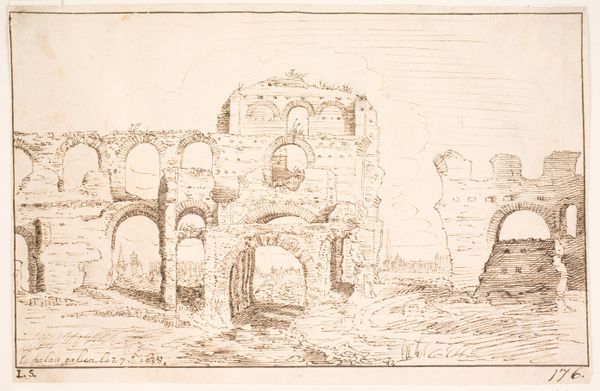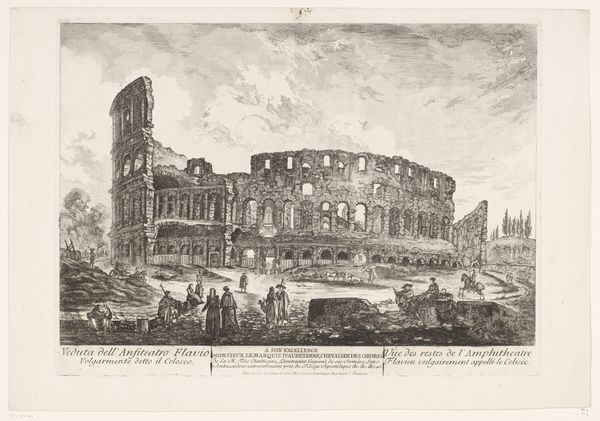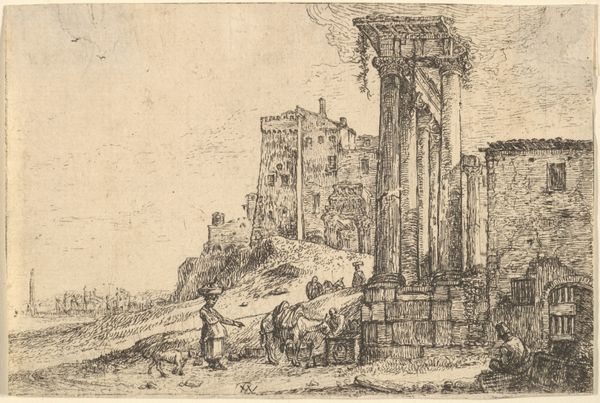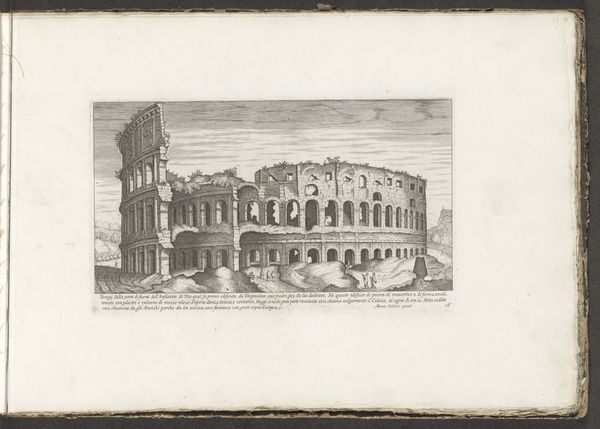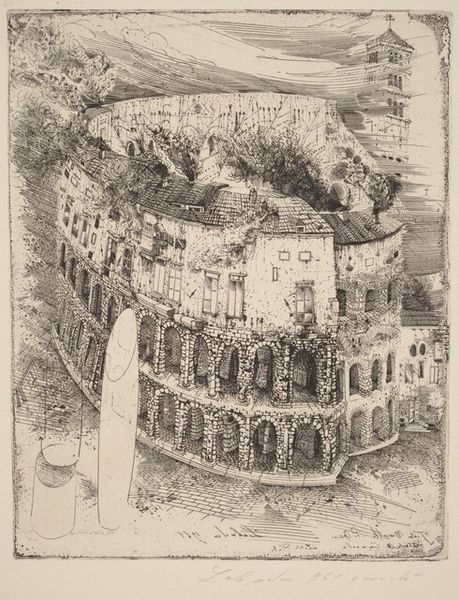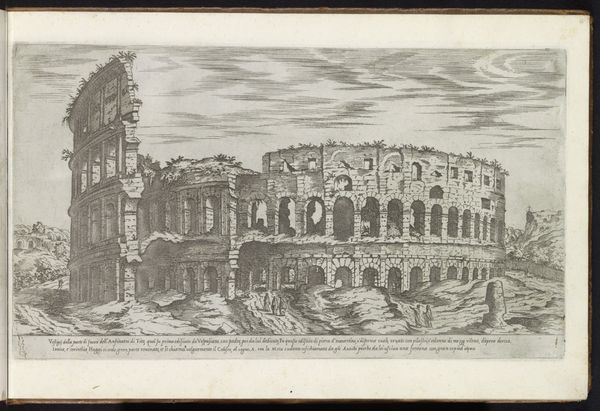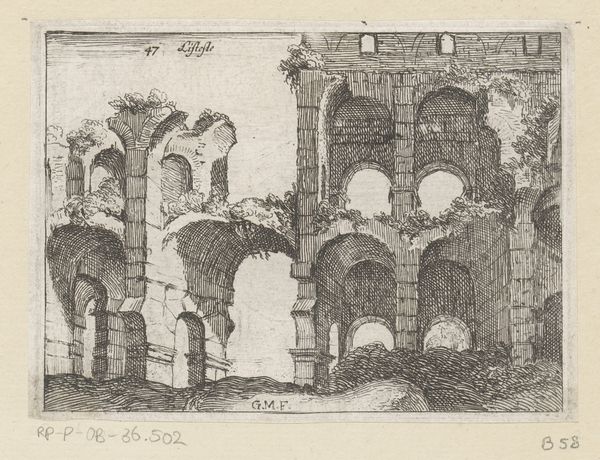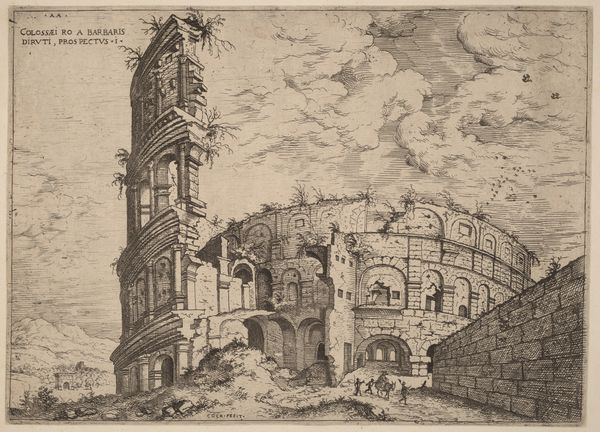
drawing, paper, pen
#
drawing
#
pen sketch
#
landscape
#
perspective
#
paper
#
romanesque
#
pen
#
cityscape
Dimensions: height 175 mm, width 270 mm
Copyright: Rijks Museum: Open Domain
Curator: This pen and ink drawing from 1609 depicts the "Exterior of the ruins of the Colosseum, Rome" by Gerard ter Borch the Elder. Editor: There's something haunting about seeing such an iconic symbol of power in such a dilapidated state. It speaks volumes about the ephemeral nature of empires and masculine structures, doesn’t it? The ruins become almost feminized, vulnerable. Curator: Indeed, but what interests me is situating this depiction within its historical context. The Colosseum was already a potent symbol in the 17th century, associated with the grandeur and excesses of the Roman Empire. Ter Borch, with his careful rendering, seems less focused on romanticizing ruin and more on accurately documenting it, reflecting a growing antiquarian interest. Editor: But can't we consider this documentation a form of romanticizing in itself? By carefully rendering these architectural details, he highlights not just decay but also a persistent monumentality. Think about the narratives it conjures: gladiatorial combat, animal hunts, public executions... these were performances of state power intrinsically linked to Roman identity and societal control. It is worth noting how power and the State continue to inflict damage today. Curator: I agree there's a level of fascination, even a political valence in recording these details. The image participates in shaping a narrative around Roman history as a lesson, both positive and cautionary, for contemporary society, especially for powerful patrons of the arts, but what is worth is its historical veracity. Editor: The choice of medium also seems significant: pen and ink, creating such meticulous lines, mimics an archaeological survey but invites its own political framing of these remnants, framing not always apparent at first sight. How were those events presented? How are they talked about today? Curator: A fine point. The starkness of the drawing emphasizes the Colosseum's vulnerability, its exposure to the elements, and centuries of neglect but one has to acknowledge how this imagery shapes how institutions behave to this day. I feel there is so much this piece can offer on that respect. Editor: Yes, indeed! It's a potent reminder of what we valorize and what we choose to let fall apart, metaphorically as well as materially.
Comments
No comments
Be the first to comment and join the conversation on the ultimate creative platform.
